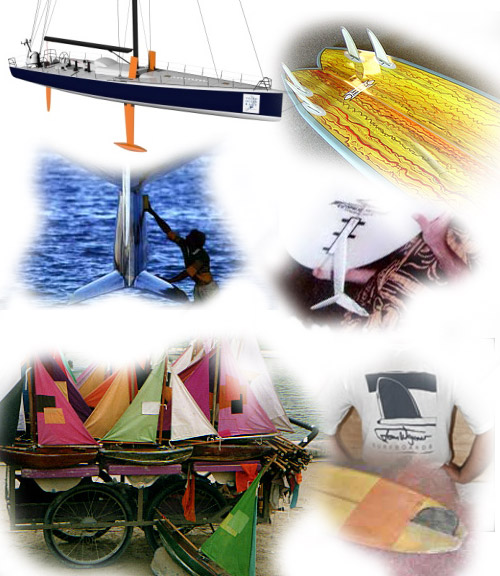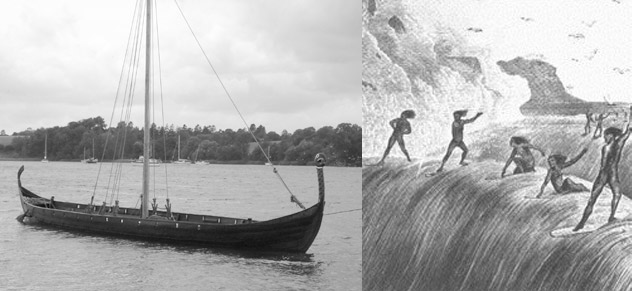how do they work?
do they suck? turn good? gimme some details.
thanks,
tim
how do they work?
do they suck? turn good? gimme some details.
thanks,
tim
Check out what Tom Wegener has to say in these links.
His other articles on suction and rails are also worth a read.
Also read about the Crusader on his board model page as he reckons the D fin is the best fin for this gun.
Fins link:
http://www.tomwegenersurfboards.com/html/fins.html
Crusader link:
Logger,
D fins are not fins, they are rudders.
Build on, then you’ll see.
Slow, un-responsive, un-predictible, but loveable…kind of like Kudjo the rabid St. Bernard.
Just when you think you got it figured out…wham, the thing will bite you.
Has anyone tried to refoil a D fin with a more modern foil to make it more responsive or is it the outline that’s the fins demise??
Foil would change its drag characteristics, but I’d say it is the outline.
Foil would change its drag characteristics, but I’d say it is the outline.
Then we’d be talking something along a spitfire fin
http://www.swaylocks.com/forum/gforum.cgi?post=324831;search_string=spitfire%20fin;#324831
Seriously, this whole thread was put forth by a young ‘newbie’ who hasnt even done a first board yet
and is exploring things based on some wierd ‘cool’ factor and is really on the wrong track with making a
succesful first board. Hopefully my harsh words will somehow help and not hinder.
Look up ‘skeg’, both on swaylocks and google.
i made a d that was 9in tall and it was super loose
maybe size is a factor?
it was realy round at the fron witha long thin foil to the back
this is a classic example of an oppertunity to do some experimental archeology.
put one on a 7’9’’ pig I made in august.
so far I’ve only got a couple waves on it.
due to limited surf time.
subsequently I have made another and yes foilt it
like a real concious foil,betcha the sucker 's gonna be a great cabbage slicer!
D is for directional
they go that way real good,altough cutbackin’ aint so effortless.
with the area being well, bluntly laid out when it wants to let go it really lets go
side ways that is no slip just a massive spinout
and when it grabs again ya’ll better be holding on real tight
adapting to this fin best done ,while in the introductory period,
in the prone holding on with two whie knuckle gripping hands
as the reset is far fron subtle.
oh yeah top turns are risky ,bottom turns are a gaurantee
wide tails make a happy medium.
…ambrose…
The D-fins (skegs) were typical on boards in the early 60s.
The outlines, bottom contours, rocker and rails of some of those boards practically forced manufacturers to use big blade fins for control. A typical outline might be a wide point back “pig” with abrupt tail rocker, bellied bottom and 50/50 rails -bigger than a silver dollar in the middle and 1/2 dollar size at the tailblock.
With that type of board design, a skeg type D-fin worked pretty good. Check the maneuvers Mike Hynson and Robert August were pulling in the “Endless Summer” movie.
That said, by mid to late 60s most guys had moved on - both in fin choice and overall board design.
I have used D fins on my last two boards, one being a woody and one being a riddler ripoff. They even work great in pintails. I have never felt so confident takign late drops, riding the nose, or stalling the pocket in overhead waves on a longboard as I do now using D fins. They are amazing.
"The outlines, bottom contours, rocker and rails of some of those boards practically forced manufacturers to use big blade fins for control. A typical outline might be a wide point back "pig" with abrupt tail rocker, bellied bottom and 50/50 rails -bigger than a silver dollar in the middle and 1/2 dollar size at the tailblock."
They, D fins, were all about not “spinning out”. If a board from that era spun out, IT SUCKED! So big old fins, “skegs”, way back on the tail, problem solved.

I love full keeled boats-think Herreschoff-but these Parisian pond boats were too cool not to show

oh yes, no keel and no fins too
Re: D-fin foiling. Phil Edwards was foiling his ‘‘reverse’’ fins, in the '58/'59 period, and I began in 1960 after discussing the topic with Phil that same year. It makes a BIG difference in performance. However, foiling cannot overcome a poor fin design, or incorrect fin placement.
no fins on deck.
…ambrose…
or farther forward
than 3 feet
never done the first
but I did try the second.
with a bitchin foil
1 1/2 ‘’ thick
a straight kinda
d fin 1977 january
my !st stand stick
paddle board.
fin right beneath
where I sat
when I stood up
what a shock
of reverse dynamics
lean right go left.
what a shock
of reverse dynamics
lean right go left.
Reminds me of the pre-funboard Windsurfer from the 80s where you had to burry the outside rail to make the board turn …